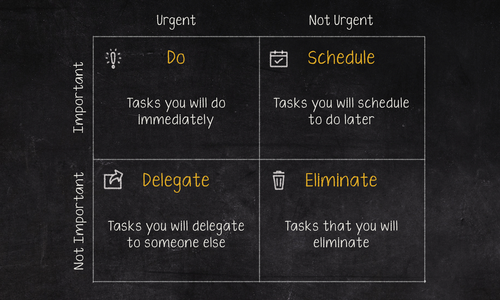Achieving excellence is not only a goal, but a need for businesses seeking to remain competitive and please demanding consumers in the dynamic business world. Six Sigma is a methodology and set of tools and techniques used for process improvement in organizations. It helps businesses to reduce defects, improve efficiency, and ultimately enhance customer satisfaction. Six Sigma entails an excessive amount of tasks and initiatives that demand attention. Due to this, professionals might find themselves juggling numerous improvement opportunities, each with its own set of complexities and priorities. This is precisely where the concept of a priority matrix steps into the spotlight. It is a Six Sigma technique, allowing the experts to make informed decisions about which projects or tasks to tackle first.
Jump ahead to
What is the Prioritization Matrix?
A prioritization matrix is a tool that aids teams and organizations in choosing which projects or tasks to take on first. It assists companies in efficiently allocating their limited resources, time, and efforts. Prioritization Matrix is a structured approach that helps teams concentrate on initiatives that most closely match their strategic objectives. This makes sure that resources are directed where they will have the greatest impact. Further, help to enhance and increase the efficiency of all processes. Prioritization Matrix is especially helpful when an organization or team has to choose where to focus their time, effort, and resources to achieve the most improvement but only has a limited amount of resources to work with.

How to Create a Prioritization Matrix in Six Sigma?
The following are the steps involved in creating a Prioritization Matrix in Six Sigma:
Establish the Criteria
The project selection criteria or considerations are included at the start of the priority matrix. These standards may include factors like impact, urgency, and difficulty. These criteria should also be aligned with the goals and objectives of the organization. The team must create a list of each task they have to do, or whatever it is they are trying to prioritize. Then, they must allocate resources and designate roles to those who will carry out the activities that are given top priority.
Rate the Criteria
The next step is to rank the tasks and allocate resources like fund and labor in accordingly. The team should rate how well each criterion meets the criteria for each objective on a scale from 1 to 10 (1 -lowest and 10 – highest). In addition, they are allowed to use an alternative scale if they’d like (such as 1 to 5 or 1 to 100). They must, however, maintain consistency with the approach they employ.
Calculate Weighted Scores
The team has to compare different tasks under the priority matrix grid to check the weighted scores. To determine a final weighted score for each project, they must multiply the scores for each criterion by their respective weights. Using this score as a starting point for project execution enables them to make fair comparisons. The team must prioritize the projects according to their overall weighted scores, with the highest score given priority.
Result Comparison
The team should undertake open discussions among its members to make sure that everyone agrees on the list produced following comparisons. The analysis can then be redone if there is a dispute. Furthermore, they should discuss the outcomes of the prioritizing matrix with stakeholders. The rankings should also be aligned with the objectives and constraints of the business.
The team can ultimately save time and effort by taking the time to prioritize the tasks. Additionally, they will be able to focus on the most crucial duties first and do the others in their downtime.
What are the Benefits of Prioritization Matrix?
- Prioritization Matrix reduces reliance on subjective judgment by offering a systematic and quantitative method of assessing and ranking improvement initiatives.
- It establishes a hierarchy for the team to carry out the tasks enabling them to keep everything organized and extremely efficient.
- Prioritization Matrix assists businesses in allocating limited assets. It includes time and money, to projects that have a high likelihood of succeeding and aligning with their strategic objectives.
- It aids in identifying and ranking projects according to their importance to process improvement, product quality, and client satisfaction.
- Prioritization Matrix include criteria for customer impact, ensuring that projects that focus on the needs of the client.
- It also takes project costs and benefits into account. This allows businesses to concentrate on initiatives that provide high returns and cost reductions.
- Moreover, the Prioritization Matrix provides a clear and visual representation of project priorities, improves communication among team members, and stakeholder
Conclusion
Prioritization Matrix ensures that improvement projects are selected and prioritized in a way that aligns with the core principles of Six Sigma. It enables organizations to make informed, data-driven decisions that lead to process improvement, quality enhancement, and customer satisfaction. Candidates interested in learning the Prioritization Matrix along with other Six Sigma techniques can enroll in Lean Six Sigma Green Belt Certification Training. Training gives a thorough understanding of Six Sigma methodologies to reduce defects, improve efficiency, and enhance customer satisfaction.



